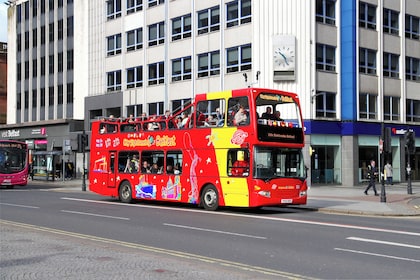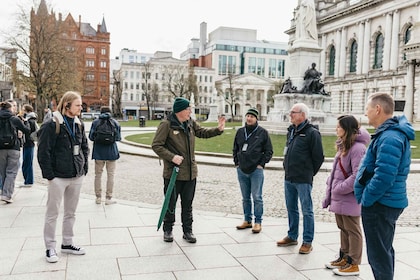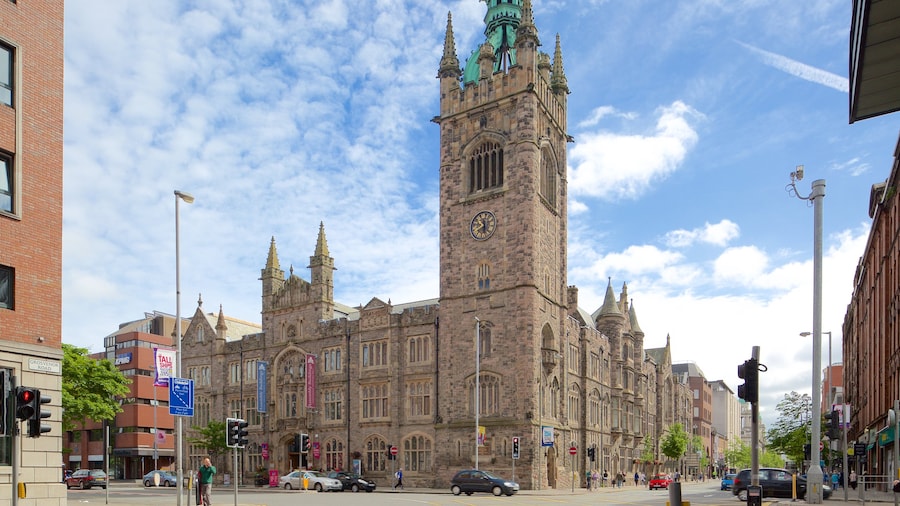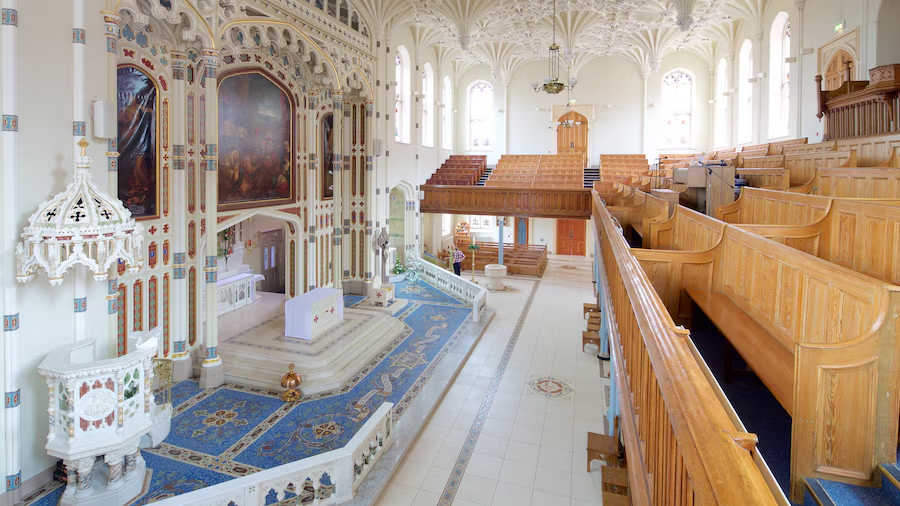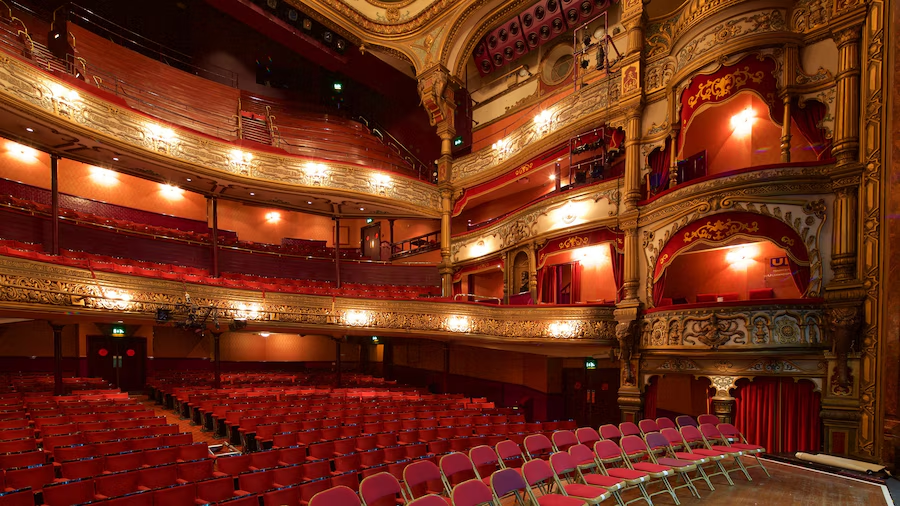Belfast City Hall is an imposing sight – it sits on the edge of the shopping district and looms over the shoppers, dividing them from the business area on the other side of the city centre. It has strong links with the Titanic – it was referred to before construction began 1898 as “the Stone Titanic” – and features a memorial garden for the sunken ship.
Plans for Belfast City Hall were first drawn up in 1888 after it was officially given the status of city by Queen Victoria. For a time, Belfast was Ireland’s largest city, overtaking Dublin, because of its industrial expansion with factories producing rope and linen, as well as the Harland and Wolff shipyard.
The building was completed in 1906 and became the home of Belfast City Council. Visitors can take part in official guided tours of Belfast City Hall and see the interior of the building from the Dome, the robing rooms where the aldermen would put on their ceremonial gowns, the council chamber and the great hall. The marbled halls are illuminated by stained glass windows featuring the Belfast coat of arms and portraits of kings and queens.
The gardens outside are a popular lunchtime venue for office workers to enjoy their sandwiches, but it also holds the Titanic Memorial Garden with a statue to commemorate the drowned sailors and passengers. The memorial features a plaque with the names of all 1,512 people who died, known as the Belfast List.









